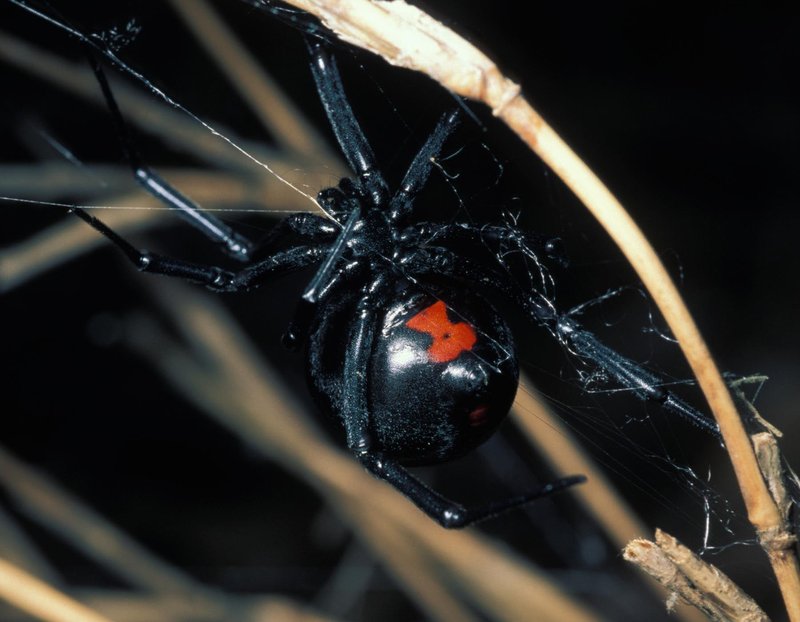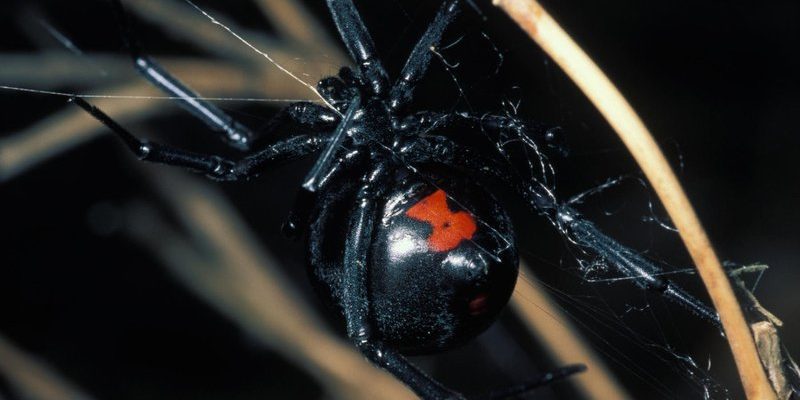
The Black Widow Spider is one of those creatures that sparks a mix of curiosity and fear. With its shiny black body and striking red hourglass marking, it has earned a reputation that makes it both infamous and fascinating. Imagine a tiny, stealthy hunter, lurking in the shadows, waiting patiently for its prey—this is the life of the Black Widow. While many people associate it with danger, understanding this spider can help demystify its behavior and role in our ecosystem.
So, what makes the Black Widow Spider unique? For starters, it’s not just its appearance that intrigues us. This spider has a complex life cycle, distinct habitat preferences, and remarkable hunting strategies that set it apart from many other arachnids. If you’ve ever wondered about its habits or how to identify it, you’re in the right place. Let’s dive into the fascinating world of the Black Widow Spider!
Physical Characteristics
When it comes to identifying the Black Widow Spider, its physical traits are hard to miss. Most adult females have a glossy, black body that can grow to about 1.5 inches in length, including their legs. Male Black Widows, on the other hand, are considerably smaller and often have lighter colorations, featuring stripes or spots that can sometimes be mistaken for other spider species. What truly stands out is the unmistakable red hourglass mark on the female’s abdomen—this is a telltale sign of her identity.
But there’s more to this spider than just looks. The Black Widow Spider has a fairly robust body and long legs, which aid in both hunting and web building. Their webs are irregular and tangled, designed more for trapping rather than for aesthetic appeal. The silk they produce is incredibly strong; in fact, it’s considered one of the toughest materials produced by a spider. It’s fascinating how nature crafts such an efficient tool for survival!
Habitat and Distribution
The Black Widow Spider is found throughout the world, but it thrives particularly well in temperate regions. In the United States, these spiders are most often found in the southern and western states, where the climate suits their lifestyle. They prefer dark, undisturbed areas—think sheds, basements, or piles of debris. This is where they set up their homes and wait for unsuspecting prey.
Interestingly, these spiders are not very territorial. You might find several females living in close proximity, each in their own web. They are attracted to places that offer shelter, warmth, and food, which is why they often find their way into human dwellings. While they typically prefer the outdoors, they can easily adapt to living in your garage or attic if the conditions are right.
Diet and Hunting Techniques
The diet of the Black Widow Spider primarily consists of insects. They are not picky eaters, consuming everything from moths to beetles. When it comes to hunting, they rely on their webs to do the dirty work for them. Once an unsuspecting insect gets caught in the silken strands, the Black Widow quickly immobilizes it with venom, which is potent enough to subdue the prey almost instantly.
The venom of the Black Widow Spider is infamous, and rightly so. It contains neurotoxins that can cause severe reactions in humans, although bites are quite rare and often occur when the spider is accidentally provoked. The victims of these bites may experience pain, muscle cramps, and more, which has understandably fueled their notoriety. However, it’s worth noting that not every bite results in serious harm, especially for healthy adults.
Life Cycle and Reproduction
Black Widow Spiders undergo a fascinating life cycle that starts with mating. After mating, the female will often consume the male, which might sound gruesome but is part of their natural behavior. This can provide crucial nutrients to the female, especially since she invests so much energy into laying and guarding her eggs.
The female lays anywhere from 250 to 900 eggs in a single sac, which she guards diligently. The eggs hatch in about 10 days to two weeks, depending on environmental conditions. The spiderlings are tiny and can disperse quickly, often by ballooning—using silk to catch the wind and travel to new locations. This strategy helps them spread out and find suitable habitats away from their siblings.
Behavior and Interaction with Humans
Despite their fearsome reputation, Black Widow Spiders are generally timid and will avoid human contact whenever possible. If you do happen to encounter one, they’re more likely to flee than attack. However, because they can bite in self-defense, it’s best to be cautious. If you’re gardening or cleaning out your shed, wearing gloves can help avoid any unexpected interactions.
Interestingly, their presence is often beneficial. They control insect populations by preying on pests, contributing to the balance of our ecosystem. While they may give most of us the creeps, keeping a healthy respect for their role in nature is essential. After all, every creature has its place in our world, and the Black Widow Spider is no exception.
| Fact | Description |
|---|---|
| Size | Females: Up to 1.5 inches; Males: About 0.5 inches |
| Habitat | Dark, secluded areas like sheds and basements |
| Diet | Insects, primarily |
| Venom | Neurotoxic, affects the nervous system |
| Lifespan | 1-3 years |
Safety and First Aid
Knowing how to identify a Black Widow Spider is crucial for safety. If you suspect you’ve been bitten, it’s important to seek medical attention immediately. Symptoms can vary, but they often include severe pain, muscle cramps, and general discomfort that can be quite alarming. Don’t wait for symptoms to worsen; getting prompt treatment can significantly improve outcomes.
First aid for a Black Widow bite includes cleaning the area gently with soap and water and applying a cool compress. Over-the-counter pain relief can help, but it’s essential to follow up with a healthcare professional to receive proper care. Remember, while the bite can be serious, fatalities are rare, especially with quick medical attention.
Conservation and Ecological Importance
Black Widow Spiders play a significant role in their ecosystems as both predator and prey. They help keep insect populations in check, which, in turn, supports plant health and biodiversity. Their silk is also an interesting aspect of natural engineering, inspiring studies in material science due to its incredible strength.
As their habitats face challenges from urbanization and climate change, conservation efforts can help maintain the delicate balance of these ecosystems. Understanding the value of Black Widow Spiders in our world could lead to more informed decisions about managing our environments, allowing these creatures to thrive while still keeping human safety a priority.
FAQ
What does a Black Widow Spider eat?
The Black Widow Spider primarily feeds on insects, making it an effective pest controller. They enjoy a varied diet, hunting down moths, flies, beetles, and other small arthropods. Their webs are designed to trap these insects, allowing the spider to immobilize them quickly with its potent venom.
Are Black Widow Spiders aggressive?
Black Widow Spiders are not typically aggressive. They prefer to avoid confrontation and will usually flee if they sense danger. Bites often occur when they are accidentally disturbed, so it’s essential to exercise caution in areas where they may reside.
How can I tell if a spider is a Black Widow?
To identify a Black Widow, look for a shiny black body and a distinctive red hourglass marking on the underside of the abdomen. Males are smaller and may have different markings, but the females are the most recognizable due to their larger size and striking coloration.
Where do Black Widow Spiders live?
Black Widows prefer dark, secluded environments. You can often find them in basements, sheds, woodpiles, and even inside homes. They thrive in warm areas and are more common in southern and western United States regions.
How dangerous is the bite of a Black Widow Spider?
The bite of a Black Widow Spider can be serious due to its neurotoxic venom, which can cause pain and muscle spasms. However, fatalities are rare, especially with prompt medical treatment. Most healthy adults recover fully with proper care.
Can Black Widow Spiders be found indoors?
Yes, Black Widow Spiders can be found indoors, especially in dark, undisturbed areas. If you live in regions where they are common, be cautious in places like garages, attics, or basements, where they might establish their webs.
How long do Black Widow Spiders live?
Black Widow Spiders can live for about 1 to 3 years, depending on environmental conditions and threats. Their lifespan can vary significantly based on factors like food availability and habitat stability.
Do Black Widow Spiders have natural predators?
Yes, Black Widow Spiders have several natural predators, including birds, wasps, and other larger spiders. These predators help maintain the population balance within the ecosystem, ensuring that no single species dominates the area.
What should I do if I find a Black Widow Spider?
If you encounter a Black Widow Spider, it’s best to avoid handling it. If you need to remove it, consider using a jar or container to trap it from a safe distance. It’s also advisable to contact pest control for assistance, especially if you believe there may be a nesting population.
Can Black Widow Spiders be beneficial?
Absolutely! Black Widow Spiders contribute to the ecosystem by controlling insect populations. Their role as predators helps maintain the balance of various species, ultimately benefiting our environment. Respecting their position in nature is essential for ecological health.
How can I prevent Black Widow Spiders from entering my home?
To keep Black Widow Spiders out of your home, seal any cracks or gaps in windows and doors, keep your yard tidy, and eliminate clutter where spiders can hide. Regular cleaning and inspection can help you spot their webs early and reduce their chances of settling in.
What is the best way to get rid of Black Widow Spiders?
For getting rid of Black Widow Spiders, consider using traps or contacting a pest control professional. They can provide effective solutions while ensuring safety for you and the environment. DIY methods may also work but should be approached with caution to avoid provoking these spiders.

